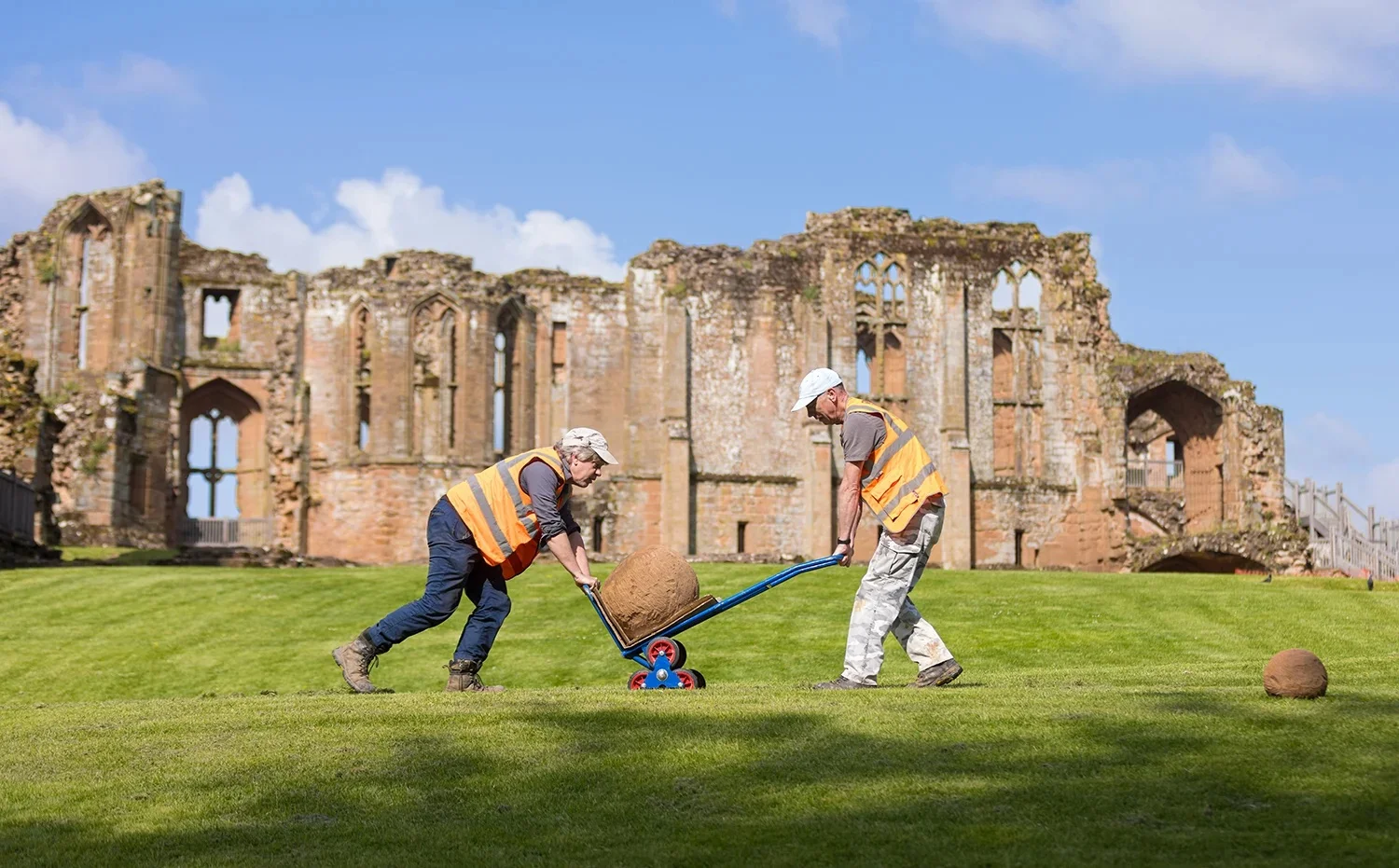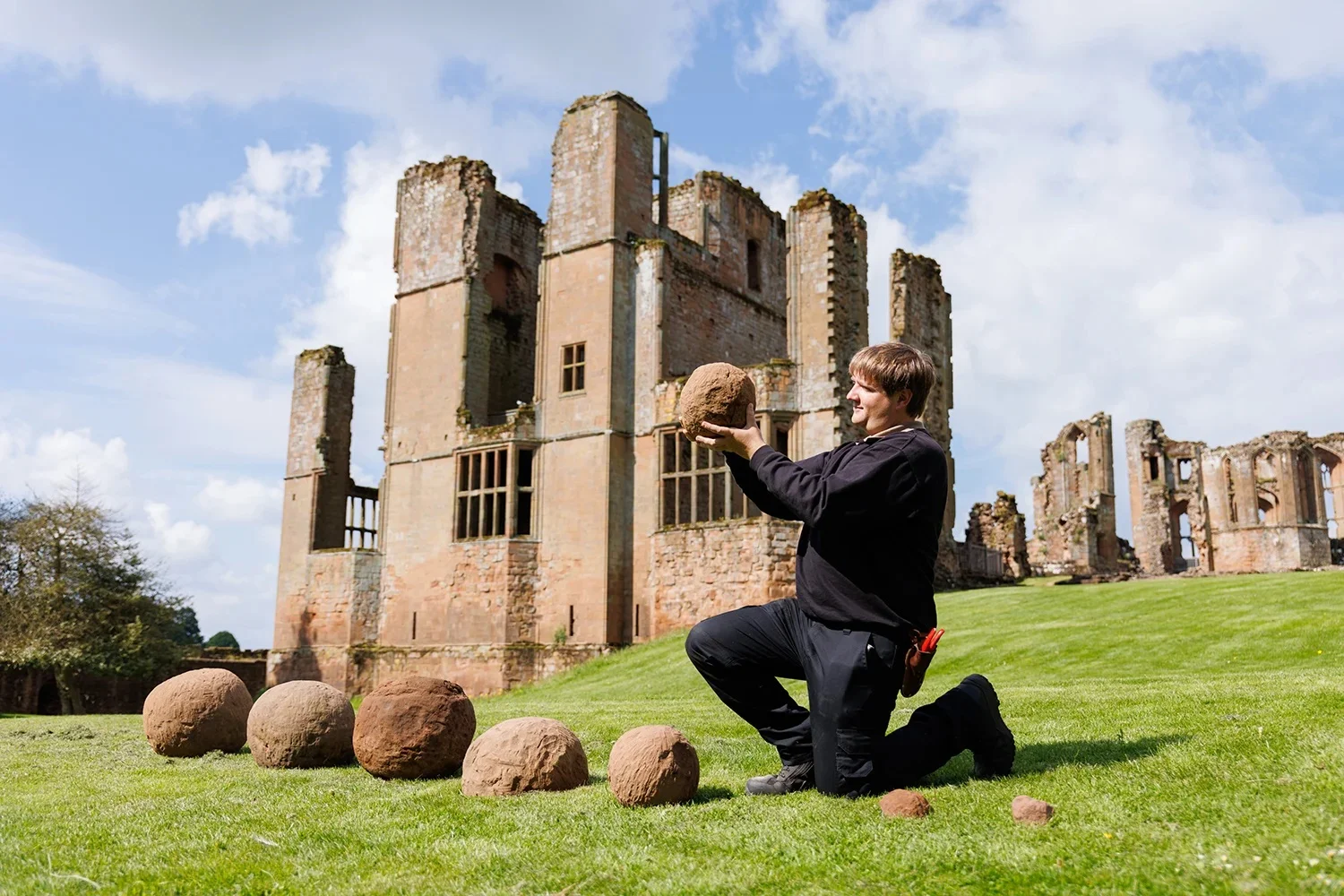Archaeologists have uncovered eight 13th century catapult shots from the 1266 siege of Kenilworth Castle.
Kenilworth Castle, located in the town of Kenilworth in Warwickshire, England, is both a semi-royal palace and historic fortress.
Founded in the 1120s, the castle was the scene of the removal of Edward II from the English throne and the Earl of Leicester’s reception of Elizabeth I in 1575.
During the First Civil War (1642 to 1646), Kenilworth formed a useful counterbalance to the Parliamentary stronghold of Warwick. Following the defeat of royalist forces, Parliament ordered the slighting of Kenilworth 1649, leaving the castle a romantic ruin and popular tourist attraction over the centuries.
Recent works to improve a pathway on castle grounds has led to the discovery of eight giant catapult shots. According to the archaeologists, the shots date from the Siege of Kenilworth (1266), a six-month siege of the castle during the Second Barons’ War.
The conflict was between a number of barons led by Simon de Montfort (who had custody of Kenilworth Castle) against the royalist forces of King Henry III, and later his son, the future King Edward I.

According to historical accounts, the siege was the largest to occur in Medieval England and involved numerous “turres ligneas” (wooden towers), trebuchets, and catapults which fired the giant shots.
The shots are of varying sizes, with the largest weighing 105 kg and the smallest just 1 kg. “’These would have caused some serious damage when fired from war machines. Records show that one of Henry III’s wooden siege towers, containing around 200 crossbowmen, was destroyed by just one well-aimed missile,” said Will Wyeth, English Heritage’s Properties Historian.
Header Image Credit : English Heritage
Sources : English Heritage





